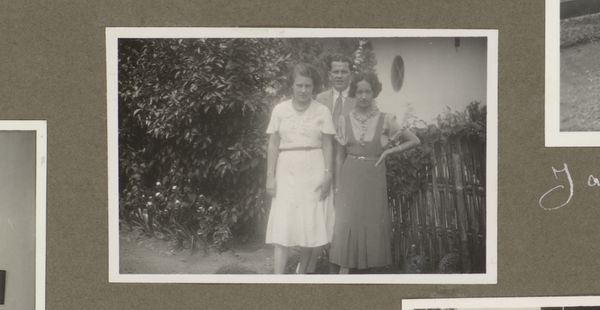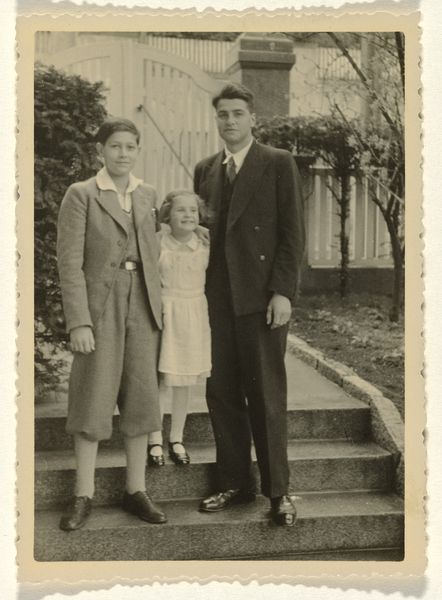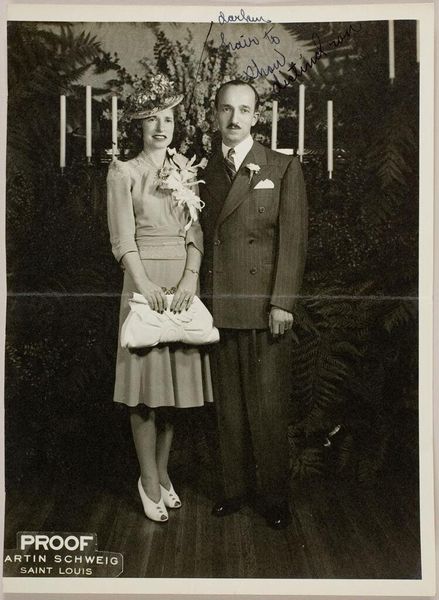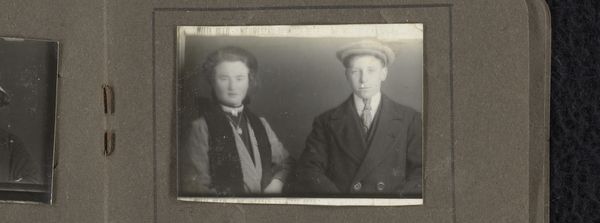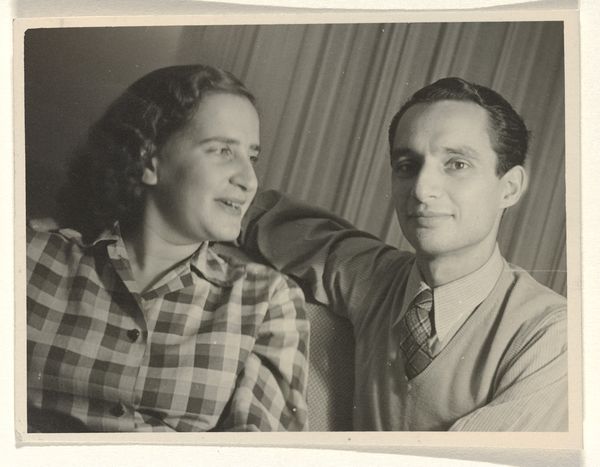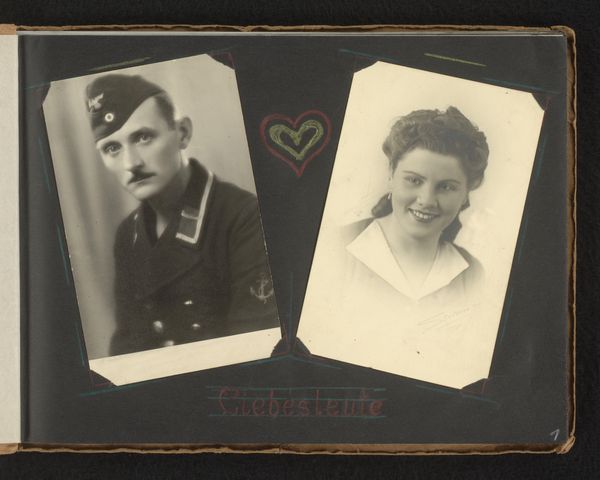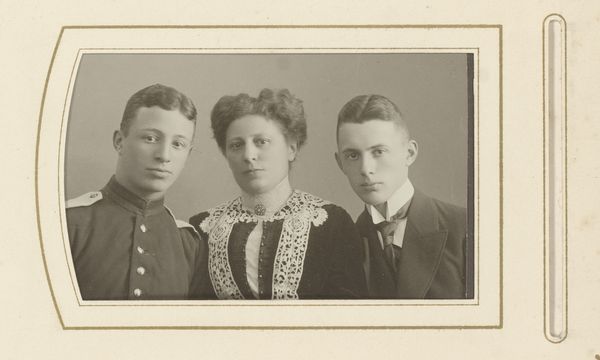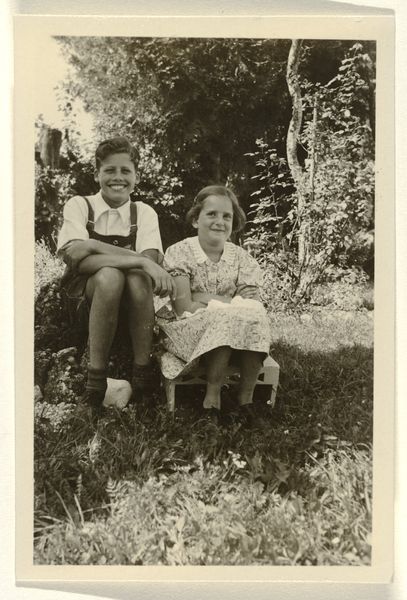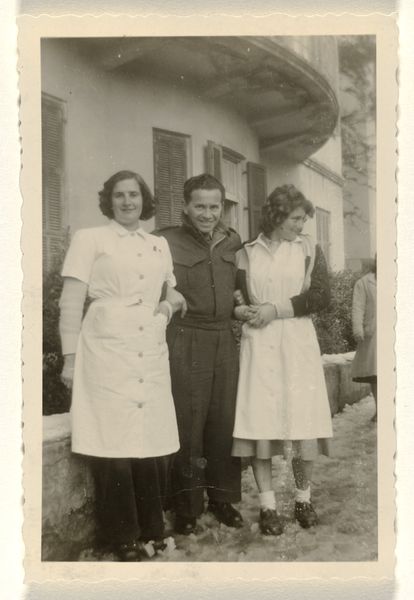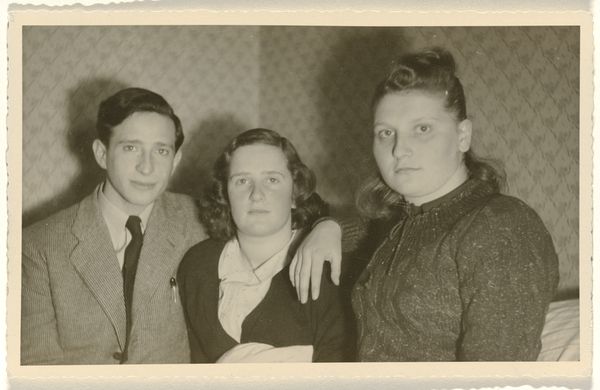
Dimensions: height 87 mm, width 131 mm
Copyright: Rijks Museum: Open Domain
Editor: This gelatin silver print, titled "Thea en Werner," was created sometime between 1941 and 1944. The portrait feels so intimate and personal. Looking at their faces, I wonder, what was life like for them at that time? How would you interpret this photograph within a broader historical context? Curator: That’s an insightful question. The creation date is crucial. Consider the socio-political environment: much of Europe was engulfed in World War II during those years. The formal nature of the portrait, a style reminiscent of earlier eras, contrasts sharply with the turmoil of the period. Notice his naval uniform and the somewhat stiff pose of both individuals. This suggests a public role, potentially serving to document and reinforce a specific image during wartime. How do you think photography like this was used in society back then? Editor: I imagine these were intended to project strength or normalcy amidst chaos, especially for loved ones back home or as mementos to remember someone by. Curator: Exactly. Beyond personal use, portraits like this could function as propaganda, subtly reinforcing societal structures and patriotism. The man's uniform, along with their relatively composed demeanor, subtly presents a picture of stability. Now, knowing this context, does your perception of the portrait shift? Editor: Absolutely. What I initially perceived as simply intimate now seems laced with a subtle sense of duty and perhaps even state-sanctioned performance. Curator: Precisely! Examining art through a historical lens illuminates its multifaceted roles. What appears to be a straightforward image becomes a rich source of information about societal values and power dynamics during a particular era. Editor: I’ll definitely consider the historical backdrop when viewing similar artworks. It really brings a deeper understanding!
Comments
No comments
Be the first to comment and join the conversation on the ultimate creative platform.


